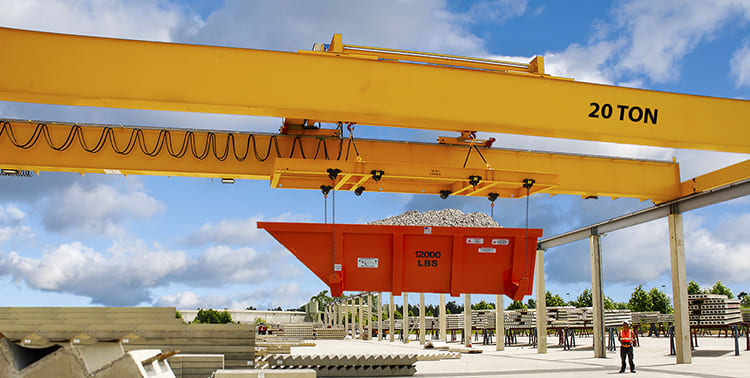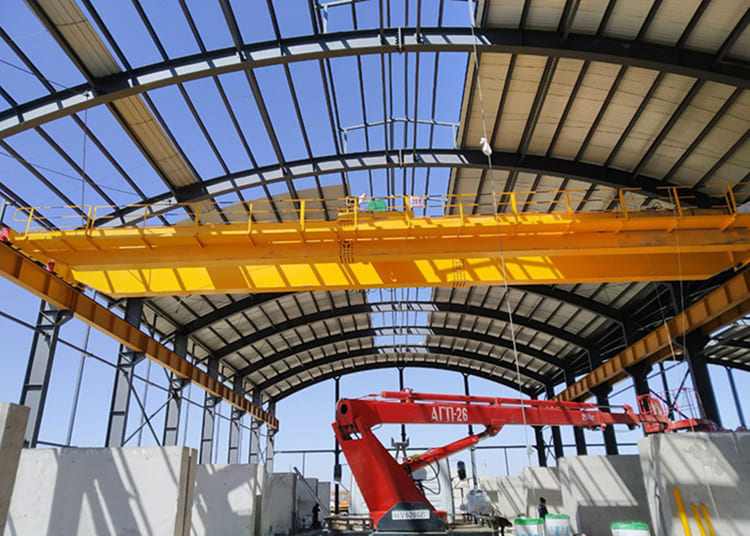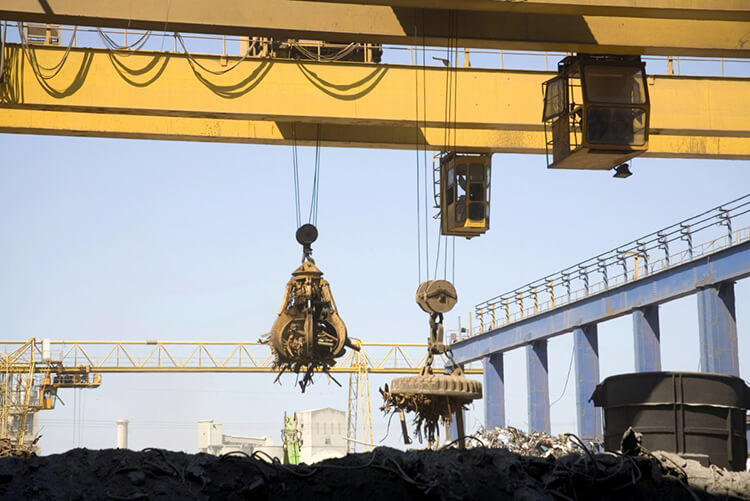Different weather conditions can pose various risks and hazards to the operation of a bridge crane. Operators must take precautions to maintain safe working conditions for themselves and those around them. Here are some precautions that should be followed while operating a bridge crane in different extreme weather conditions.
Winter weather
In the winter season, extreme cold weather and snow can affect the performance of a bridge crane. To prevent accidents and ensure safe operation, operators must:
- Inspect the crane before each use and remove snow and ice from critical equipment and components.
- Use de-icing sprays or apply antifreeze coatings to the crane wherever necessary.
- Check and maintain the hydraulic and pneumatic systems to prevent freeze-ups.
- Keep a close watch on the ropes, chains, and wire that may break due to cold weather.
- Wear warm clothing and use personal protective equipment, including insulated gloves and boots.
- Avoid overloading the crane and operate at the recommended capacity, which may vary in cold weather.
- Be aware of the presence of icy or slippery surfaces, and make adjustments to the speed, direction, and movement of the bridge crane.
High temperature
During the summer season, high temperatures and humidity can affect the health and performance of the crane operator. To prevent heat-related illnesses and ensure safe operation, operators must:
- Stay hydrated and drink plenty of fluids to prevent dehydration.
- Use sunscreen, sunglasses, and a hat to protect from the sun’s ultraviolet rays.
- Wear moisture-wicking clothing to stay dry and comfortable.
- Take frequent breaks and rest in a cool or shaded area.
- Check the crane’s critical equipment for damage caused by heat, including metal fatigue or warping.
- Avoid overloading the overhead crane and operate at the recommended capacity, which may vary in high temperatures.
- Adjust the crane’s operation to account for decreased performance in hot temperatures.
Stormy weather
In stormy weather, such as heavy rain, lightning, or high winds, the crane’s operation can pose a significant risk. To prevent accidents and ensure safe operation, operators must:
- Review the crane’s emergency procedures and protocols before operating in stormy conditions.
- Avoid using the crane in high wind conditions that could cause instability or sway.
- Monitor weather forecasts and suspend operations in severe weather situations.
- Use a lightning protection system and avoid using the bridge crane during thunderstorms.
- Keep a close watch on the surroundings for potential hazards, such as downed power lines or unstable ground.
- Ensure that loads are adequately secured from movement or flying debris.
- Be aware of sudden gusts or changes in weather conditions and adjust operations accordingly.
In Conclusion
Operating a bridge crane requires attention to detail and focus given the potential hazards associated with the work. Weather conditions can add another layer of risk for the crane operator and surrounding workers, so it’s crucial to take precautions to ensure safe operations. Following the recommended precautions will help prevent accidents, ensure safe crane operation, and keep everyone on the job site safe.










